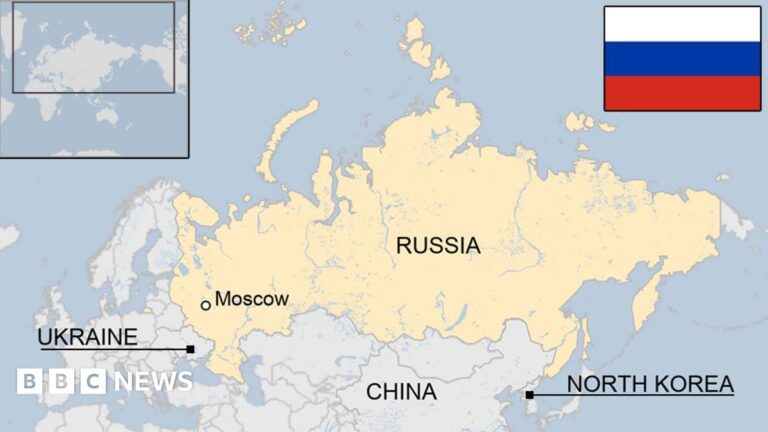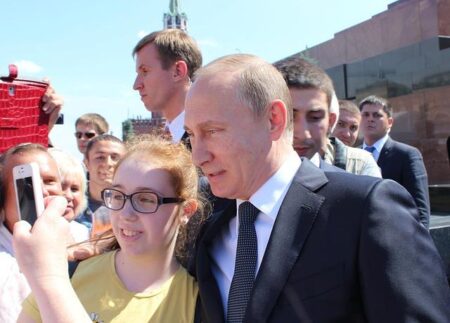Russia’s Birth Rate Crisis: An Urgent Call for Action
As global demographic changes unfold,Russia stands at a pivotal moment,with forecasts suggesting that its birth rates may decline to historically low levels. This trend emerges amidst significant economic and social hurdles, raising alarms among policymakers and demographers. Reports indicate that 2023 could witness the fewest births in contemporary Russian history, leading to serious implications for the nation’s workforce, social services, and overall demographic structure. In this article, we examine the underlying causes of this decline, its potential repercussions, and the responses from both government officials and society.
Economic Influences on Russia’s Declining Birth Rates
The drop in birth rates across Russia can be linked to various intertwined economic factors that have created a daunting landscape for prospective parents. Rising inflation, which has seen significant fluctuations recently, has diminished purchasing power while escalating living costs. many families struggle to meet basic needs; thus adding children becomes an overwhelming financial burden. Additionally, increasing unemployment rates, especially in rural regions, further dissuade young couples from expanding their families. The prevailing sense of economic uncertainty fosters a cautious approach toward family planning—contributing significantly to declining birth figures.
Despite government initiatives aimed at enhancing fertility rates through financial incentives, these measures often fail to tackle broader issues such as job security and housing availability effectively. Many young adults express concerns over inadequate maternity leave provisions and limited access to affordable childcare as further obstacles preventing them from having children. With an increasing number of individuals prioritizing career growth over family life decisions, Russia’s demographic future appears increasingly uncertain.
Approaches to Reverse the Demographic Trend in Russia
The concerning trend of decreasing birth rates necessitates immediate action through innovative strategies aimed at reversing this demographic downturn. To address this issue comprehensively,policymakers must adopt a multifaceted strategy focusing on both economic incentives and robust social support systems. Potential approaches include:
- Enhanced Financial Support: Increase direct financial assistance for families by improving parental leave benefits and providing child allowances or tax deductions for larger households.
- Adequate Housing Solutions: Formulate policies ensuring affordable housing options are available for young families so they feel more secure about starting their own households.
- Pursuit of Work-Life Balance: Encourage workplace policies that promote flexible hours or remote work opportunities tailored around parenting responsibilities.
Cultivating societal attitudes towards family life is equally crucial in addressing these challenges effectively. Initiatives designed to emphasize the value of familial bonds could inspire more Russians to consider parenthood seriously; specific actions might involve:
- Civic Engagement Programs:create community initiatives offering resources for new parents while fostering supportive networks among families.
- Aware Campaigns: Launch national awareness campaigns showcasing the advantages of parenthood alongside available support systems for families.</ li >
- Corporate Family Policies: Motivate businesses towards adopting family-pleasant practices while nurturing an habitat where parental involvement is recognized as essential employee welfare.
Government Initiatives Shaping Future Family Planning Trends
The role played by government policies is critical when it comes down shaping trends surrounding family planning amid alarming forecasts regarding declining birth rates in Russia . To combat this demographic crisis , decision-makers should explore diverse strategies focused on improving both social conditions & economic environments conducive towards raising children . Key initiatives may encompass :
-
- Financial Assistance: Direct payments provided upon childbirth & during child-rearing periods can help alleviate some financial strains associated with parenting.
-
- Childcare accessibility: Enhancing accessibilities related affordable childcare services encourages parents (especially women) pursue careers without sacrificing time spent raising kids .
-
- Parental Leave Reforms: Extensive paid parental leaves create supportive atmospheres welcoming new arrivals into homes .
-
- Educational Outreach Efforts :> Promoting benefits tied directly back into familial structures along informed choices shifts societal perspectives favorably toward having offspring.
As these policy frameworks develop , it remains imperative ensure effective communication channels exist making them accessible across all demographics . until concrete measures target root causes behind dwindling numbers , russia risks facing consequences stemming from aging populations coupled with potential adverse effects economically speaking . A comparative analysis examining nations experiencing similar phenomena might yield valuable insights leading toward actionable solutions :
In Summary
The convergence of socio-economic challenges faced by Russia highlights how impending declines within its population pose ample ramifications moving forward into future generations ahead.. With projections indicating record lows looming near horizon experts caution against long-term impacts affecting workforce demographics alongside overall stability within economy itself plus vital public service sectors too! Governmental efforts directed towards tackling these pressing matters will prove instrumental shaping country’s evolving landscape demographically speaking! As authorities respond accordingly world watches closely gauging how shifts influence regional dynamics international relations alike years ahead ! This ongoing situation underscores complexities inherent modern-day demographics trends far-reaching consequences they entail!




